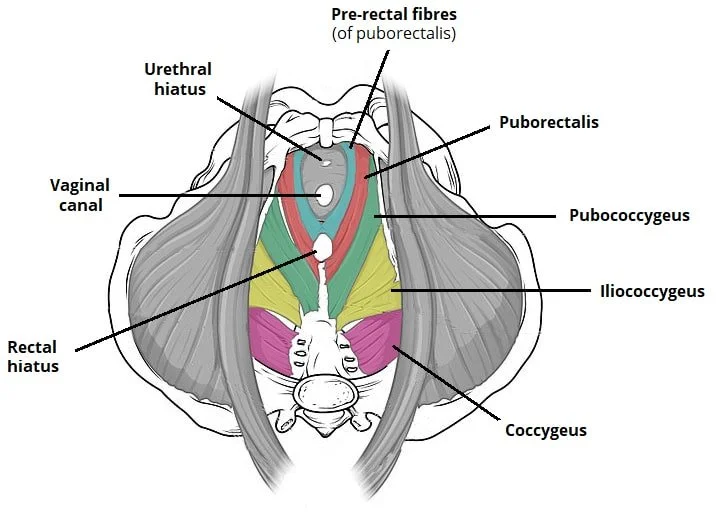Tips for an active pregnancy
By Rachael Maher | Physiotherapist - Women’s & Pelvic Health
Are you currently pregnant or planning to be pregnant soon? Planning to start a family is a
very exciting time in life, but for some women it can also be filled with anxiety and worry.
Am I doing the right thing? Is this going to affect my baby? How do I have the best chance at
a healthy pregnancy?
When it comes to pregnancy, there are a lot of things that are out of our control. However,
luckily there are a lot of things you can do to minimise discomfort before and during
pregnancy, that are based on loads of scientific research.
Be physically active before and during pregnancy
Prior to becoming pregnant, making sure you are physically active has huge benefits for not
only you but also your future baby. The fitter and stronger you are prior to conceiving, the
less likely you are to experience side effects such as pre-eclampsia, gestational diabetes
and incontinence during your pregnancy.
Do your pelvic floor exercises
No matter if you are planning to be or already are pregnant, now is the perfect time to start
pelvic floor exercises. Pelvic floor exercises completed whilst pregnant have so many
benefits, including reducing the risk of incontinence during and after pregnancy (Department
of Health and Ageing, 2021)..
How to squeeze your pelvic floor muscles: squeeze the muscles around your anus as if you
are holding in wind. Studies have shown that this cue is the most effective for the majority of
people.
Try starting with 10 x 2-3 second holds completed three times a day, and slowly build up to
10 x 8-10 second holds three times a day.
If you’re not sure that you’re doing your pelvic floor exercises correctly, book in to see a
women’s & pelvic health physiotherapist for an assessment.
If you are not already pregnant:
If you are not already pregnant, I recommend following the Australian Government
Guidelines for adults which are:
- Being active on most if not all days of the week including:
- 2.5 to 5 hours of moderate intensity physical activity – such as a brisk walk,
golf, mowing the lawn or swimming
- 1.25 to 2.5 hours of vigorous intensity physical activity – such as jogging,
aerobics, fast cycling, soccer or netball
- an equivalent combination of moderate and vigorous activities.
- Completing 2 days per week of muscle strengthening activities such as lifting
weights, push ups, squats or household chores that involve lifting, carrying or
digging.
(Department of Health & Aged Care, 2021)
If you are already pregnant:
It can be like the wild west out there if you are already pregnant and trying to find exercise
advice. There are so many myths and out of date information out there about exercising
during pregnancy, that it can be hard to know who to trust.
If you have a normal, low risk pregnancy, the Australian Government exercise guidelines for
pregnancy are pretty much the same as those for adults:
- Being active most days, preferably every day, to a weekly total of either:
- 2.5 to 5 hours of moderate intensity physical activity (being able to talk whilst
doing these activities)
- 1.25 to 2.5 hours of vigorous intensity physical activity (not being able to talk
easily whilst doing these activities)
- an equivalent combination of moderate and vigorous activities.
- Do muscle strengthening activities at least 2 days each week. Aim to do
strengthening activities, such as light resistance training or bodyweight exercises.
(Department of Health and Ageing, 2021).
ESSA (Exercise & Sports Science Australia) also has a pregnancy screening tool you can
look through and discuss with your health practitioner to see what type of exercise is right for
you during your pregnancy.
Some common complications that require health professional input before exercise include
(but are not limited to):
- Incompetent cervix
- Ruptured membranes
- Placenta previa
- Persistent bleeding
- Pre-eclampsia.
If you aren’t sure if you have a normal low risk pregnancy, or if you have some pregnancy
complications, consider speaking to your health professional such as your GP, OBGYN,
midwife or women’s/pelvic health physio about what exercise you should be doing.
References:
Department of Health and Ageing (2021). Physical activity and exercise during
pregnancy. Retrieved from: https://www.health.gov.au/topics/physical-activity-and-
exercise/pregnancy
Department of Health and Ageing (2021). Physical activity and exercise for all adults.
Retrieved from: https://www.health.gov.au/topics/physical-activity-and-exercise/physical-
activity-and-exercise-guidelines-for-all-australians/for-adults-18-to-64-years
Exercise and Sports Science Australia (2021). Screening Tool - Physical Activity /
Exercise During Pregnancy. Retrieved from:
https://www.essa.org.au/Public/Public/ABOUT_ESSA/Pre-
Exercise_Screening_Systems.aspx

